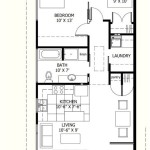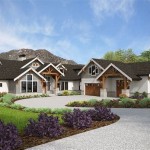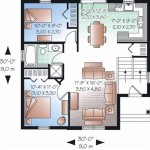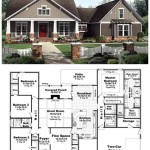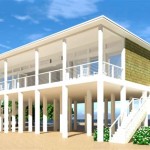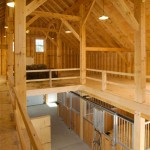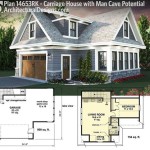House Plans: One Story Open Floor Plan
One-story open floor plan homes are increasingly popular due to their accessibility, spacious feel, and adaptability to various lifestyles. This design approach emphasizes interconnectedness between living spaces, fostering a sense of togetherness and facilitating ease of movement. These floor plans generally combine the kitchen, living room, and dining area into a single, unified space, creating a central hub for daily life and entertainment. A well-executed one-story open floor plan can maximize natural light, enhance visual flow, and offer a flexible canvas for homeowners to personalize their living environment.
This article will explore the key characteristics of one-story open floor plan house plans, highlighting their benefits, design considerations, and common features. It will also address some of the potential drawbacks and offer solutions to mitigate them. The information presented is intended for individuals considering building or remodeling a home and looking for comprehensive insights into this popular architectural style.
Benefits of One-Story Open Floor Plans
One of the primary advantages of a one-story open floor plan is its enhanced accessibility. With all living spaces located on a single level, it eliminates the need for stairs, making it an ideal choice for individuals with mobility limitations, families with young children, and aging populations. The absence of stairwells also simplifies moving furniture and reduces the risk of falls.
The open design promotes social interaction. The seamless flow between the kitchen, living, and dining areas allows family members and guests to easily connect and communicate, even while engaged in different activities. This is particularly beneficial for families with active children, as parents can supervise them while preparing meals or relaxing in the living area.
Open floor plans often maximize natural light penetration. With fewer walls obstructing the passage of sunlight, natural light can flood the entire living space, creating a brighter and more inviting atmosphere. This can also lead to energy savings by reducing the need for artificial lighting during the day. Large windows and strategically placed skylights can further enhance the natural light in these designs.
The flexibility of an open floor plan is another significant advantage. The absence of fixed walls allows homeowners to customize the space to their specific needs and preferences. Furniture arrangement can be easily altered to create different zones for various activities, such as lounging, working, or entertaining. This adaptability makes open floor plans well-suited for both small gatherings and large parties.
Design Considerations for One-Story Open Floor Plans
While open floor plans offer numerous benefits, careful planning and execution are crucial to avoid potential drawbacks. One of the key considerations is sound control. With fewer walls to absorb sound, noise can travel easily throughout the open space. This can be problematic for individuals who require quiet for work or relaxation. To mitigate this issue, consider incorporating sound-absorbing materials such as carpets, rugs, upholstered furniture, and acoustic panels. Strategically placed bookshelves or room dividers can also help to dampen sound.
Defining spaces within the open floor plan is another important design consideration. While the open concept encourages fluidity, it is essential to create distinct zones for different activities. This can be achieved through various design elements, such as changes in flooring material, the use of area rugs, varying ceiling heights, or the placement of furniture to create visual boundaries. For example, a kitchen island can serve as a natural divider between the kitchen and the living area.
Proper ventilation and temperature control are also crucial in open floor plans. With a large, interconnected space, it can be challenging to regulate temperature evenly. Consider installing multiple HVAC zones to allow for individual temperature control in different areas. Ceiling fans can also help to circulate air and improve comfort. Effective ventilation is essential to prevent the buildup of odors and humidity, particularly in the kitchen area. A powerful range hood is a must-have for any open kitchen.
Maintaining a cohesive aesthetic is vital for creating a harmonious and visually appealing open floor plan. Choose a consistent color palette and design style throughout the space to create a sense of unity. While it is possible to incorporate different textures and patterns, ensure that they complement each other and create a cohesive overall look. Consider the flow of traffic and ensure that furniture is arranged in a way that promotes easy movement and avoids creating bottlenecks.
Common Features and Layout Options
One-story open floor plans often feature a central great room that encompasses the living, dining, and kitchen areas. This central space serves as the heart of the home and is typically designed to be spacious and inviting. Large windows or sliding glass doors often connect the great room to an outdoor living space, such as a patio or deck, further extending the living area and blurring the boundaries between indoors and outdoors.
The kitchen is often a focal point of the open floor plan. Islands or peninsulas are commonly used to provide additional counter space, seating, and storage. These features can also serve as a visual barrier between the kitchen and the living area, providing a sense of separation without completely closing off the space. High-end appliances, custom cabinetry, and stylish lighting fixtures are often incorporated to create a modern and functional kitchen.
The bedrooms are typically located away from the main living area to provide privacy and separation. A common design approach is to create a master suite with a private bathroom and walk-in closet. Additional bedrooms may be grouped together in a separate wing of the house, often with a shared bathroom. The location of the bedrooms relative to the living area should be carefully considered to minimize noise disturbance.
Mudrooms or entryways are often incorporated into one-story open floor plans to provide a designated space for storing coats, shoes, and other outdoor gear. This helps to keep the main living area clean and organized. Mudrooms can also serve as a transition space between the garage and the house, providing a convenient place to drop off groceries or other items. Some mudrooms may also include a laundry area, further enhancing their functionality.
Outdoor living spaces are an integral part of many one-story open floor plans. Patios, decks, and porches extend the living area and provide opportunities for outdoor dining, relaxation, and entertainment. Covered patios or pergolas can provide shade and protection from the elements, allowing homeowners to enjoy their outdoor space year-round. Outdoor kitchens, fireplaces, and comfortable seating can further enhance the outdoor living experience.
Storage solutions are critical in open floor plans to maintain a clutter-free environment. Built-in shelving, cabinets, and storage benches can provide ample storage space without sacrificing aesthetics. Consider incorporating hidden storage solutions, such as drawers under stairs or benches with lift-up seats, to maximize space utilization. A well-organized pantry is essential for keeping the kitchen tidy and efficient.
The orientation of the house on the lot can significantly impact the amount of natural light and solar gain. Consider the position of the sun throughout the day and design the house to maximize sunlight exposure during the winter months and minimize it during the summer months. Overhangs and awnings can provide shade and help to regulate temperature. Landscaping can also be used to create shade and privacy.
The use of sustainable materials and energy-efficient technologies can further enhance the appeal of one-story open floor plans. Consider incorporating solar panels, energy-efficient windows, and high-efficiency HVAC systems to reduce energy consumption and lower utility bills. Sustainable building materials, such as bamboo flooring, recycled insulation, and low-VOC paints, can create a healthier and more environmentally friendly living environment.
In conclusion, one-story open floor plans offer a compelling combination of accessibility, spaciousness, and flexibility. By carefully considering the design principles and addressing potential drawbacks, homeowners can create a comfortable, functional, and visually appealing living space that meets their specific needs and preferences. These floor plans are a testament to modern living and offer a seamless blend of style and practicality.

Stylish One Story House Plans Blog Eplans Com

One Story Modern Farmhouse Plan With Open Concept Living 51829hz Architectural Designs House Plans

Must Have One Story Open Floor Plans Blog Eplans Com

3 Bedroom One Story Open Concept Home Plan Architectural Designs 790029glv House Plans

3 Bedroom House Plans With Open Floor Plan Remarkable One Story F Single Level Garage Y

Stylish One Story House Plans Blog Eplans Com

4 Bedroom House Plans One Story Open Floor

Simple House Plans Blog Homeplans Com

Must Have One Story Open Floor Plans Blog Eplans Com

One Story Barn Style House Plan

